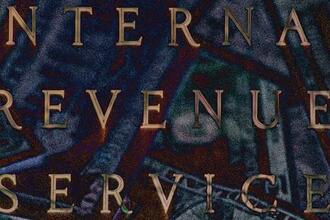
Connectedness now drives much of our interaction throughout our days and weeks.
Technology ushers in era of relationship overload
Connectedness brings so many joys. There’s the joy of reconnecting with an old friend, or sharing pictures of special moments with people far away, or the ability to build or join a new community quickly and easily. In addition to the joy, there’s also the relief that comes with the conveniences that connectedness affords. Being able to leave work at a reasonable time while knowing that the last few critical messages can be sent out later from home, dropping a text to a spouse without needing to interrupt anyone with a ringing phone, or having a video conference call via computer with colleagues scattered around the globe (and still being home for dinner) are all examples of the efficiencies brought about by networked technology in our lives. While we may take these for granted for the most part in our daily lives, the truth is that connectedness now drives much of our interaction throughout our days and weeks, culminating in the better part of our waking hours being driven by relatively new forms of technology.
Of course, with all of the benefits come burdens. Being connected to the office from home feels like a miracle until you realize that your colleagues now count on you to answer every request or comment on every message clear around the clock, and your work time swells while your time with your family shrinks. Texting is handy, and even fun, until you find your phone pinging with nonstop notifications while you’re trying to do something else. And those long-lost friends you reconnected with? Now you are expected to wish them a happy birthday, express sympathy for their moments of trauma, and possibly even put up with their political commentary on a daily basis! This secondhand stress has been labeled the cost of caring and needless to say, many find the long list of these new "rules of engagement" to be exhausting.
Enter the new era of relationship overload, where it begins to feel like everyone you’ve ever met wants a piece of your attention through a nonstop fire-hose of requests. These requests compromise not just our sanity, but also our safety. A recent national poll has shown that the most likely texts and calls that drivers receive are from immediate family members — teens were most likely to be interacting with their parents and adults were most likely to be interacting with a spouse. Relationship ties are now expected to take precedence over every moment of our lives, even when safety is at risk.
Indeed, one of the hidden problems with processing all of these small interruptions and micro-interactions (checking social media, responding to texts, etc.) is that our minds don’t bounce from idea to idea as easily as we’d like. Instead, attention residue impedes our ability to seamlessly string together different sets of interactions. For example, imagine that you’re having a conversation with a colleague when your child sends a quick text to check on something from home. Even if you do the more polite thing and excuse yourself to your colleague by explaining that your child needs you for a quick moment (which does indeed make the other person feel better about the interruption), the original conversation won’t be the same when you return to it. In addition to the disjointed flow and the need to remember where you were in the conversation, your brain is also still busy processing the conversation with your child. It takes a few extra moments of review before you are ready to "close out" thoughts on it. To return to the dangerous driving situation, it has been shown that even hands-free, voice-activated technology systems in cars can take a driver’s mind off the road for roughly 15 and 30 seconds after using the system, during which time the driver is finishing up thoughts of the conversation or information and reorienting to the road.
Compounding the problem, connectedness itself now comes in many new forms. There are options to use video chat, email, dating applications, social media, photo sharing, work-related networking tools, text messaging…and the list continues to grow. While many people prefer to compartmentalize their social contacts and separate their discussions about politics, family matters, high school or college, or work, this is increasingly difficult with social media tools that collapse contexts such that messages are visible to all members of one’s social network. This creates an additional cognitive burden in managing relationships when you are unsure of who is going to be viewing your posts. Of course, the question of age also rears its head here, with many recognizing that those under age 30 tend to use a different set of tools than those over that age.
So why is it so hard to shut down the steady stream of requests and information about other people that come our way, even if the risks in terms of cognitive burnout are so great? In short, because we are hard-wired to be social animals, to get energized from hearing gossip, to want to be noticed by other people, and to want to constantly compare ourselves to others to see how we measure up. Those elements of the human psyche are not going to go away, but what can change is our individual choices about what we allow to grab our attention, and when. Recognizing the limitations to both our cognitive and our empathetic abilities, we need to pace ourselves each day and remember that existing in a state of overload makes you no good to anyone, not even yourself. Enjoy the new abilities to get and stay connected, but also remember to give your mind and your soul time to appreciate the interactions that you choose each day. Now if you’ll excuse us, there are some messages that need attending to…
Terri R. Kurtzberg, Ph.D is an associate professor of management and global business at Rutgers Business School-Newark and New Brunswick and Jennifer L. Gibbs, Ph.D is professor of communication, University of California, Santa Barbara. They are the co-authors of "Distracted: Staying Connected without Losing Focus" (ABC-CLIO, Incorporated, April 2017)
Photo credit: ChrisClinton/digitalvision/Thinkstock
Press: For all media inquiries see our Media Kit


